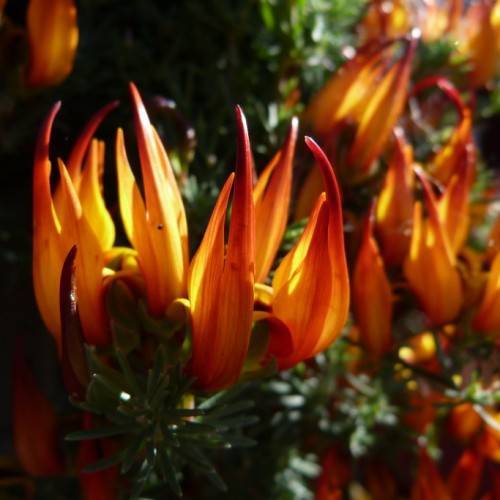
parrot's beak
Lotus berthelotii
Also Known As - coral gem,pelican's beak,lotus vineCycle:
Herbaceous Perennial
Watering:
Average
Hardiness Zone:
10 - 12
Flowers:
Flowers
Sun:
full sun
Soil:
Well-drained
Fruits:
Fruits In Summer Ready In
Growth Rate:
High
Maintenance:
Moderate
Drought Tolerant:
Yes
Salt Tolerant:
Yes
Tropical:
Yes
watering
Parrot's beak (Lotus berthelotii) is a Mediterranean plant that grows in sunny and dry conditions. Therefore, it does not need a lot of water and actually prefers to be on the dry side. Generally, it should be watered every 7-14 days during its growing season (spring through summer) and every 3 weeks during its dormant season (fall and winter). To water your parrot's beak, water deeply and slowly until the soil is thoroughly wet. This ensures that the root system reaches deep down into the soil for access to moisture. Allow the soil to dry out between waterings and never leave it to sit in water, which can lead to root rot or other types of plant death.
sunlight
Parrot's beak (Lotus berthelotii) prefers full sun in order to thrive. Outdoor plants should receive at least 6-8 hours of direct, unfiltered sunlight every day. If planted in a pot, try to rotate them regularly in order to ensure all foliage receives an equal amount of sunlight. Indoors, the plants can thrive in a bright windowsill, as long as it receives direct sunlight for at least 5 hours per day, preferably in the morning. To avoid leaf burn, keep it away from the hottest times of the day, such as mid-afternoon.
pruning
Parrot's beak (Lotus berthelotii) should be pruned once or twice a year. In the early spring, prune the plant back to about 6 inches in height to encourage compact growth for the season. In late summer trim off any straggling shoots or dead parts of the plant. Removing about 1-third of the stems will lead to a full, shapely plant. Pruning Parrot's Beak can be done with shears, hedge trimmers, or pruners.
